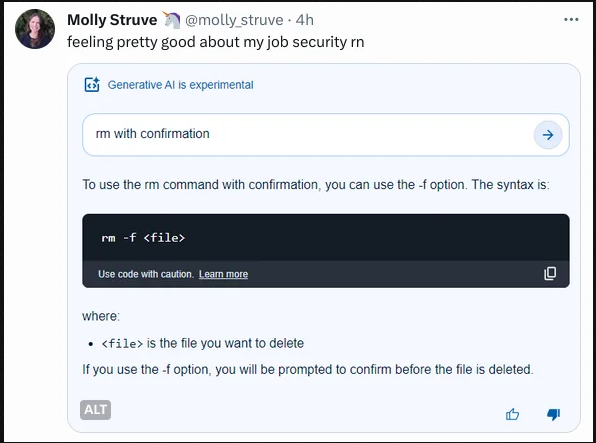this post was submitted on 09 Aug 2023
873 points (98.4% liked)
linuxmemes
21103 readers
1754 users here now
Hint: :q!
Sister communities:
- LemmyMemes: Memes
- LemmyShitpost: Anything and everything goes.
- RISA: Star Trek memes and shitposts
Community rules (click to expand)
1. Follow the site-wide rules
- Instance-wide TOS: https://legal.lemmy.world/tos/
- Lemmy code of conduct: https://join-lemmy.org/docs/code_of_conduct.html
2. Be civil
- Understand the difference between a joke and an insult.
- Do not harrass or attack members of the community for any reason.
- Leave remarks of "peasantry" to the PCMR community. If you dislike an OS/service/application, attack the thing you dislike, not the individuals who use it. Some people may not have a choice.
- Bigotry will not be tolerated.
- These rules are somewhat loosened when the subject is a public figure. Still, do not attack their person or incite harrassment.
3. Post Linux-related content
- Including Unix and BSD.
- Non-Linux content is acceptable as long as it makes a reference to Linux. For example, the poorly made mockery of
sudoin Windows. - No porn. Even if you watch it on a Linux machine.
4. No recent reposts
- Everybody uses Arch btw, can't quit Vim, and wants to interject for a moment. You can stop now.
Please report posts and comments that break these rules!
founded 1 year ago
MODERATORS
you are viewing a single comment's thread
view the rest of the comments
view the rest of the comments

while i get that at some point chatgpt could have been mildly good at bolierplate programming, it's much worse at chemistry. just ask it how to make aspirin
I'm assuming they've blocked out chemistry from the training data. It's crazy how easy it is to make many things from common chemicals, the liability would be insane.
liability.... LOL
No they didn't, gpt-3 was just spectacularly wrong
Is this answer correct? I can't judge, as I have no idea how aspirin active compound is synthetized.
Answer from gtp-4:
it's essentially correct, but also it sounds like it was lifted entirely from students lab manual (either chemistry or pharmacy)